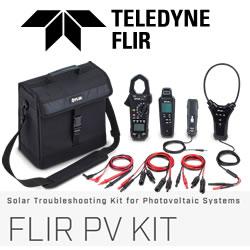Solar PV systems consist of many components, which are connected by cables and connectors. This is one of the main safety hazards of any solar PV system. In this Solis article we'll share how a connectivity failure could create a security problem and how to prevent it.
Poor Connectivity – A Costly Threat to Your Solar PV System
Article from | Solis Inverters
Solar PV systems consist of many components, which are connected by cables and bespoke connectors. This is one of the main safety hazards of any solar PV system. In this Solis seminar we'll share how a connectivity failure could create a security problem and how to prevent it.
Connection Failure is one of the Main Safety Hazards of a Solar System
According to actual O&M data from 746 PV plants, the EU Horizon 2020 "Solar Bankability" project team gave a list of the TOP 20 technical failures in PV plants. "Wrong/Absent Cable Connection" and "Broken/Burnt Connectors", ranked in the top two on the list of failures.
Figure 1.
In addition, Fraunhofer ISE research also shows that the root cause of PV system failure is mainly concentrated in poor contact caused by installation problems.
Incorrect or Poor Connection Points
Connection is the general way to form a complete electrical system. In a PV system, there are many connection points. Taking a 30kW three-phase PV system as an example, which uses 100 x 300W modules and a 30kW string inverter; the configuration is as follows
MPPT1: 20 PCS * 2strings
MPPT2: 20 PCS * 2strings
MPPT3: 20 PCS * 1string
The number of DC connection points for a single string is 21 (See Figure 2 below), and there is a total of 105 connection points for 5 PV strings. In addition, there are 24 AC connection points, so overall the system has a total of 129 connection points.
The larger the system, the more connection points. Adding MLPE devices to the original system triples the number of connection points. In Figure 3 below, only an optimizer is added, and the connection points of the string are increased by 40.
Problems Caused by Connection Failures
In PV systems, improper wiring or incorrect use of cables will result in poor contact and increase in contact resistance. This affects system performance, increases system costs, can cause additional losses and create hidden system hazards.
How to Connect Correctly
-
Select correct and high-quality materials, including the selection of DC and AC cables; the selection and configuration of system connectors, circuit breakers, etc. require strict attention in the early design stage.
-
Ensure the installation specification conforms with the relevant electrical standard and use professional wiring tools. You should refer to the installation manual of each product for guidance.
-
Regularly use a thermal imager to troubleshoot system connection problems, or use the SolisCloud online monitoring platform to perform operation and maintenance inspections to repair faults in a timely manner.
Summary
Connection failure is a very serious safety hazard in PV systems. Issues can cause both damage to the system but also reduce the impact of any energy savings factored in at the feasibility stage.
We need to pay attention to installation and construction and later O&M to avoid these problems and improve system safety.
Utilizing online monitoring software such as SolisCloud ensures that any faults can be identified and fixed quickly to avoid costly system downtime.
The content & opinions in this article are the author’s and do not necessarily represent the views of AltEnergyMag
Comments (0)
This post does not have any comments. Be the first to leave a comment below.
Featured Product


